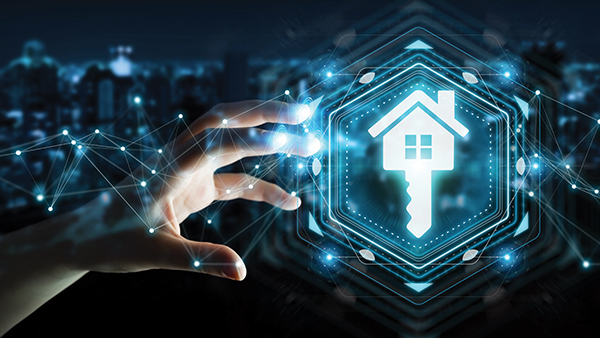Historically, the real estate sector has been slow to see a major disparity between changing consumer demands. Which ultimately meant not much needed to shift internally for progression and success. Now, however, the volatility of the world we live in no longer allows this luxury.
Although counterintuitive for most, it’s time for real estate professionals to align with the changes in the industry, specifically in technology. Emerging technological solutions are not just the acquisition of hardware but rather the adoption of innovative solutions that will incorporate software solutions, platforms, and applications for better building operations and tenant satisfaction.
One field that is drastically changing in real estate is physical security and access control. Access control solutions are quickly evolving, and real estate professionals who embrace change will emerge resilient.
Planning for Access Control
While not traditionally a major consideration in the stages of a building’s infancy, access control systems are more often becoming a topic of discussion surrounding construction, architecture, and infrastructure.
Creating a Digital Infrastructure
As access control and physical security become more technologically sophisticated, so too should the buildings that host them. This requires creating an infrastructure from the ground up that will support these new advancements in proptech (property technology) overall. Of course, a digital infrastructure can be incorporated into any facility, but it is a capital-intensive and time consuming venture that should be avoided if possible.
There are several differences that go into the digital infrastructure of a building as opposed to a traditional one. There needs to be a plan in place for digital capacity and bandwidth. Most tenants, from multifamily buildings to CRE, now require or desire a specific bandwidth to operate. Flexibility and adaptability of the structure of the building itself also needs to be planned for.
Considering Future Tenants and Occupants
Contemplating the tenant experience – what is important to them, and their overall security mindset – is important when planning a physical security strategy. But that is not all. Future tenant needs ought to be put into consideration, as well. Knowing who your current and prospective tenants are, their demographics, and what they value will help in making the right decisions for the building. This includes selecting an access control solution that will future-proof success and satisfaction in the long run.
New Access Control Technology
Current access control technology is different from what it used to be. Legacy methods typically consist of hardware-intensive, on-site systems that are very expensive to install and maintain. Physical access tokens (such as key cards and fobs) are used to authenticate users. New access control technologies have evolved to support a digital environment for tenants and property managers.
Moving to Cloud-Based Systems
Access control solutions are moving to the cloud, which simply means the software is hosted in a remote server that is accessible from anywhere instead of on-site.
Cloud-based systems allow real-time updates, remote management, and scalability. This helps simplify building management tasks while also increasing efficiency and convenience. Cloud-hosted systems also (for the most part) employ a SaaS business model that lowers up front costs for property owners and makes advanced, secure physical security available to everyone.
Touchless Access Control Technology
Touchless access control is also on the rise. The term “touchless” encompasses a lot of things, but more or less refers to a frictionless solution that eliminates access touchpoints. Mobile access, via bluetooth proximity or mobile app unlock, allow users to use their smartphones as access credentials. This eliminates the need to touch additional surfaces, or potentially — depending on the configuration of the hardware — nothing at all. Biometric access that uses face recognition and artificial intelligence is another form of touchless access control on the rise.
Two-Factor Authentication
Two-factor authentication is becoming more popular and important. It simply refers to providing two forms of identification for access as an additional level of security. This is particularly critical for controlling access to highly sensitive areas. Having a second form of identification greatly reduces the chance of unauthorized access and potential security threats.
Benefits of Modern Access Control Solutions
The capabilities of modern access control solutions go far beyond controlling who can gain entry to the property. These systems provide advanced security, increase convenience for owners and occupants, and drive revenue.
Physical Security and Safety
Modern access takes physical security one step further. In addition to granting door entry, new innovations in access control systems also control elevators and other internal access points or secure areas. Flexible access rules can be added to ensure that access only be granted during certain times during the day. Similarly, visitors — not just regular, authorized tenants — may be provided with secure access on a temporary basis. Real-time monitoring also makes it possible for property owners to track who accessed what area and at what time.
Convenience for Tenants and Admins
Tenants are attracted to properties that use technology to provide a modern experience. Newer access control solutions do just that by eliminating the need to keep track of access tokens and giving them the discretion over their visitors.
For administrators, managing building security is much more effective as it can be done remotely. Cloud-hosted systems remove the necessity to be physically present at the site in order to monitor activity, update user permission, and grant access.
Increasing Revenue and Decreasing Cost
Modern access control solutions are no longer just a function of physical security, they are a building amenity. They offer convenience and better security, increasing building reputation. This supports tenant retention, decreases vacancy rates, and consequently increases revenue.
In regards to decreasing cost, less training and on-site operation is needed. Manual updates do not need to be scheduled and deployed. Overall time coordinating access token distribution is diminished, making overhead in general much less of an expense. Finally, the hardware itself is much more cost effective than legacy access control systems that require substantial upfront expenditure.























0 Comments